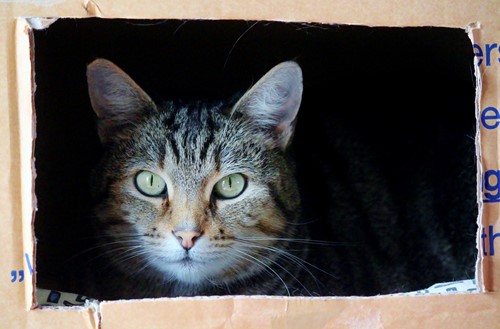
Moving from one state to another is stressful enough for adults and children. Often pets are doubly confused. Your home may be the only world they've known. They don't understand why you're leaving or if you're coming back. Boxes are piling up and moving people, family and friends are everywhere. This may increase your pet's anxiety and find them acting out or running away more than usual.
We've compiled five of the best expert tips for moving cross-country with your pet.
We love this one from the New York Times. Often pets pick up on your own frazzled, sad or angry emotions. If you're frantically sorting boxes or searching for items, your pet will feel equally frustrated.
If this move is causing you stress, take time to slow down and do something you love. Remember, this is temporary. Whether it's an upgrade or a downsize, you're going to love your new home.
All the boxes, shifting furniture and people are disorienting. On top of that, the front door may be propped open for extended periods. Put your pet in a room as far from the commotion as possible. If they're prone to gnawing or scratching, put them in a crate and play some white noise, pleasant music or a TV program they'll associate with you to ease the stress.
If your pet is afraid of the carrier they'll travel in, leave it out in the room for a few weeks before your move. They can walk in and out of it on their own and know that it's not a trap. Put some treats and a blanket they love in there. Help them make positive associations with that safe traveling crate.
If you're moving cross country, you may encounter unfamiliar hazards like:
You know your pet best and what may be a risk to them. Inspecting for hazards will help you prepare for their safe arrival.
Don't give your pets a whole new world to explore all at once. Instead, start them in one room like a laundry room or bathroom with food, water, bed and litter box (if applicable). Spend a few hours with them there. Then introduce them to the rest of their new home.
For more tips on moving, buying and selling your home, follow our blog.

There are many qualities and skills that go into being an excellent real estate professional - integrity, in-depth community and market knowledge, marketing savvy, effective negotiation skills and a high-quality professional network, all of which are hallmarks of how I work.